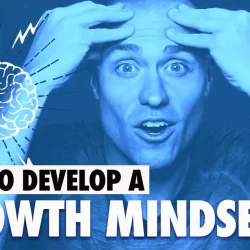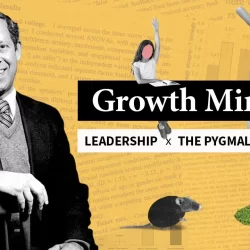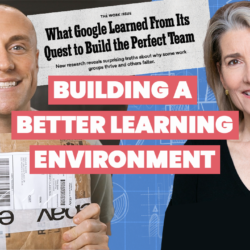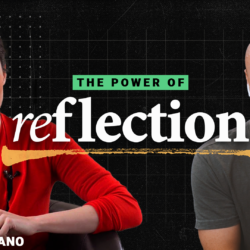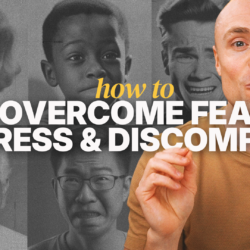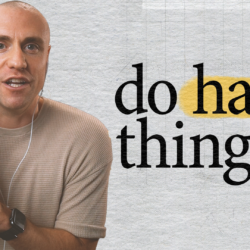A video essay featuring: Amy Edmondson
We’ve all seen or been a part of both good and bad teams. But what creates this gap? What separates bad from good and good from great? How can we build better teams on purpose?
In 2012, Google set out to answer these questions. They rounded up the best researchers, statisticians, organizational psychologists, sociologists, and engineers and launched an internal study called Project Aristotle to figure out the key to great teams. For five years they pored over the literature and analyzed the performance and makeup of nearly 200 groups within the company.
They looked at every variable you could imagine. Personality types, educational background, whether the teams socialized in their off-time, gender balance, and age.
They measured team effectiveness in four different ways:
1. Executive evaluation of the team
2. Team leader evaluation of the team
3. Team member evaluation of the team
4. Sales performance against quarterly quota
And found…nothing.
No matter how they arranged the data, there were no clear patterns.
Some of the best groups they found were composed of members that socialized together, and other top performing groups were made up of members who were virtually strangers. There were seemingly identical groups with huge gaps between their performance and output.
“We had lots of data, but there was nothing showing that a mix of specific personality types or skills or backgrounds made any difference. The ‘‘who’’ part of the equation didn’t seem to matter.” – Abeer Dubey: manager @ Google (full article)
After years of dead ends the team stumbled into the concept of psychological safety, and everything fell into place.
The researchers realized that it wasn’t about who was on the team, it was about how they worked together. Psychological safety was the most important factor in this process.
Factor number one: psychological safety.
With two different approaches, Google and Coyle arrived at the same result.
Psychological safety is the key to group learning and performance. Amy Edmondson is the one to talk to if you want to understand what it is and how to build it.
A few years ago I had the honor of doing just that.
Edmondson is the Novartis Professor of Leadership and Management at the Harvard Business School. Her field of study is how human interactions influence success. Specifically, she studies psychological safety and in our interview, she clarified what psychological safety is, why it matters, and how to build psychologically safe workplaces.

Psychological safety refers to our perception of how the group will respond to us and our actions.
Can I be myself? Can I speak up? Can I make mistakes? Can I take risks?
In a team with high psychological safety, teammates feel confident that no one on the team will embarrass or punish anyone else for admitting a mistake, asking a question, or offering a new idea.
On a team with low psychological safety, the opposite is true.
Think about joining a new team at work. You’ve got a brief, but you don’t really get why you’re working on the project.
Do you ask about the end goal? Or do you avoid drawing attention to yourself?
Asking means publicly admitting you have no idea what’s going on, and that puts you at risk. What if you’re the only one who doesn’t get it?
In a psychologically safe group, you’re more likely to ask the question because you know you’re not risking negative consequences by doing so. That means you get a better understanding of what you’re working on and the rest of the group gets an opportunity to nail down their goals. Everyone benefits.
Psychological safety rewards and encourages this kind of interaction. The best teams value people who step out of their comfort zones.
With a popular topic like this, there are bound to be some myths and misconceptions. Dr. Edmondson unpacked four of the most common:
Myth 1: Psychological safety is all about being nice and avoiding discomfort
False. It’s not about being fake nice, lowering standards, or avoiding difficult situations. It’s the opposite. Psychological safety requires honesty and candor. If a team member has a go at something and gets it wrong, we don’t need to give them fake praise. It’s more important to give honest, constructive feedback. To have tough conversations. To acknowledge problems in order to solve them.
Truth: Psychological safety gives team members the freedom to have tough, honest conversations and deal with difficult situations head on.
Myth 2: Psychological safety means a guaranteed position on the team
In most situations our place on the team is not guaranteed. Our starting position on the volleyball team is only ours if we keep adding value. We might keep our spot if we keep doing exactly what we’ve been doing and no more, but the chances that someone will pass us by and take our spot increases the longer we stay stagnant. The same is true in the workplace. We might be able to keep a job by playing it safe but we’re not positioning ourselves for a promotion and we’re not adding as much value to the group as we could.
In a healthy organization, our best bet to securing our position is continual growth and development. Psychological safety encourages and rewards these types of behaviors and engagement.
Truth: Psychological safety encourages honesty, calculated risks, and stretching. Engaging in those behaviors drives development and performance – which is the pathway to more security.
Myth 3: Psychological safety comes from the top down
Good management is an important aspect of team dynamics, but psychological safety is ultimately local – it’s about the small groups we work on within the organization. It relies on interpersonal relationships. Daniel Coyle talks about the 15 feet around you. While no company has mastered the ability to make all their employees feel safe all the time, every team member makes an impact on everyone in their orbit. Our actions can help build safety side-to-side.
Truth: Psychological safety is hyper-local, meaning every team member influences feelings of safety for those around them.
Myth 4: Psychological safety is static
“We talked about safety once and now we’re good to go for the rest of the year” isn’t going to cut it. Building psychological safety is not a one-time fix because the feeling of safety is fluid and requires attention.
It’s also not something you either have or you don’t. Groups with low feelings of psychological safety can build it up over time, just like groups with high feelings of psychological safety can lose it over time.
Truth: Psychological safety can be built up or diminished.

Obviously Google’s project illustrates the power of psychological safety, but what’s going on under the hood? How and why does it play such a crucial role in a group’s success?
We are group animals. We’ve evolved to survive by working together. It’s in our DNA. Part of that evolution is the need to constantly check for reassurance about our place in a group.
Do I belong? Do I fit in? Am I welcome?
If our position in a group feels insecure, the learning centers of our brains shut down. And we tend to avoid learning behaviors. We’re less likely to take risks. We don’t ask for help or draw attention to ourselves. We stop doing the things that will help us learn and grow. We underperform.
No safety = limited action = limited growth.
In an overview of psychological safety research, Amy Edmondson found that psychological safety can actually predict both group learning and group performance.
Teams that feel safe learn better. Teams that feel safe perform better.It makes sense: growth requires action. A bit of struggle. Uncertainty, experimentation, stretching out of our comfort zone. Feeling psychologically safe helps us engage in these learning behaviors. Safety drives action.
No wonder Google found it to be the key to a group’s success.
Safety is the foundation for group learning and performance. If we want better outcomes – to make more money, win more games, solve more problems, and innovate – we need to build psychological safety.
Okay, we know what it is. We can define it. We know it’s important. But how do we use it? How do we build psychological safety into our classrooms, families, teams, and organizations?
Amy Edmondson explained that there are three pieces to focus on when building safety.
Step 1: Set the Stage
Dealing with change, solving problems, and chasing big goals is not easy. These all have uncertainty and challenges baked into the journey. We build safety when we’re open and honest about the nature of the journey.
“We’re going through big changes right now. We’re all going to be stretched and challenged in different ways.”
“We don’t have the answers to all of the problems we’re facing. Finding the answers is going to involve a lot of experimentation and trial and error.”
Acknowledge the uncertainty. Remind teammates of the importance of experimentation and growth. Give them permission to feel.
Step 2: Invite Action & Model
Inviting action is a powerful way to build more safety within a group. Identifying things people do when they feel safe and then finding ways of encouraging those types of actions is a backdoor way of building psychological safety. A great first step is asking people to give feedback – to contribute their ideas, to speak up, to ask questions, to share their mistakes.
A major league baseball team I worked with is really good at this. They wanted to encourage people to ask more questions during meetings, but realized this can be a tough leap for some to make. To get the ball rolling, note cards were placed in every chair. During meetings they encouraged everyone to write down any question they had. They collected all the cards, then read questions aloud and answered each one. This is a low-stakes way to get some reps and practice taking action. Over time they can phase out the cards and do it live.
Another way to encourage more action is through modeling. Modeling might be the most accessible and high-impact strategy to build safety.
A middle school that I worked with did a project they called “The Anti-Talent Show.” Every teacher and student picked something they couldn’t do, practiced for two weeks, and then took part in their Anti-Talent Show.
Some students learned to juggle, others learned to skateboard, to draw, to recite poetry.
Of course nobody mastered their skill in two weeks, but they were all way better at it.
This is a great way for students to build a growth mindset. They see their progress and are more likely to believe in their capacity to grow.
But there was something even more powerful going on that I wasn’t aware of until I visited with a group of students from the school.
Sitting in a classroom with a few dozen 7th graders, I asked them what their favorite part of the Anti-Talent Show was. Most were just excited about their new skill. One kid tried to show off his new skill by attempting to juggle shoes.
To my right a girl raised her hand: “The best part of the Anti-Talent Show for me was that I got to see my teacher struggle, and that helped me understand it’s okay for me to struggle too.”
Whoa.
The teacher was learning an entirely different skill than this student. Modeling wasn’t the teacher showing the girl how to skateboard. It was bigger than that: the teacher was modeling the learning process – the willingness to try something new, to experiment, to struggle.
And that created a safer environment for the students to do the same.
Modeling builds safety.
USA Volleyball Women’s National Team coach Karch Kiraly is known to end every one-on-one meeting with a player by asking: “How can I be better for you?”
It takes real vulnerability to ask that question because sometimes it’s tough to hear the answer. Think about the power that’s packed into that simple question. He will undoubtedly receive useful input and feedback from the players, but looking at the big picture, this is a fantastic example of modeling.
Imagine you play for Karch and at the end of every meeting he looks you in the eye and he asks you for feedback. By modeling this behavior, he’s built a safe place for you to ask him for feedback.
Modeling builds safety.
I’ve done about 100 workshops on Zoom over the past year and a half. And at the end, the same thing happens virtually every time.
I ask the group if they have any questions. Crickets. After a long awkward silence, someone will usually speak up and ask, and then seven more people will ask. The action of one team member made it safe for others to speak up.
Because, say it with me, modeling builds safety.
And here’s what it looks like IRL:
(The song playing is by Santigold. Santigold rules.)
Two great things about modeling:
1. It doesn’t always have to happen from the top down. It can work side-to-side too. Our actions can impact those around us. We can all build more safety within the group in small but impactful ways.
2. Modeling builds safety, safety leads to more learning actions, more actions create more models, which builds more safety.
Step 3: Monitor Your Response
Inviting action and modeling can get us started, but sometimes what we don’t realize is that our response to these actions is just as important as the actions themselves.
If I ask for your input but ignore it when you give it to me…
If I ask for your honest feedback but take it personally, freak out, and tell you all the reasons you’re wrong when you give it to me…
If I ask you to try out the new move in practice but punish you when it doesn’t work…
If the major league baseball team reads a note card and completely dismisses the question…
If I tell you to ask more questions but get agitated when you do…
I’m killing the safety.
Yes, to build safety, we need to invite these actions. But we also have to monitor our response to the actions (like our friend, the dancing dude on the hill. Did you notice his response to dancer #2?)
This doesn’t mean we’re fake or that we have to praise a misstep or bad idea. But we should absolutely give some love to the attempt.
“Thank you for being honest with me. It’s tough to hear and will take some time to process but I appreciate you bringing this up.”
“I love that you brought this idea to the table. From my vantage point, here are a few holes that I can see. If we can fix those, this could work. Thank you for sharing this because I know putting an idea out there can be tough.”
Every team will face its share of bad news, disappointment, and dissent. How the members handle negative outcomes goes a long way toward building (or destroying) psychological safety. If a mistake happens, does the team learn from it, or look for a scapegoat? When a member gets critical feedback, do they accept it, or lash out? How each individual responds can either reinforce safety or shut it down. This is another form of modeling.
Ultimately, building safety is about being aware of our own actions. Every action we take sends a signal to the people around us. Building safety means being conscious of these signals and constantly reinforcing each member’s place in the team. Building safety is not a one-time fix.
This is how we approach our workshops now. Even when we’re working with leaders from the very top of an organization, we spend 80% of the time on their mindset, their fears, on how they can become better learners. This positions them to become better models and build more psychological safety within their teams.
If we want a group to learn and perform better, we need more safety. To build safety we need to invite more action, model great learning as much as we can, and make sure our responses reinforce actions that lead to growth and psychological safety.
For more on Psychological Safety:
Google’s Project Aristotle
The Fearless Organization by Amy Edmondson
The Culture Code by Dan Coyle
Psychological Safety Overview by Amy Edmondson
Our modeling podcast episode
Our psychological safety podcast episode

